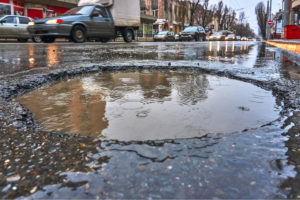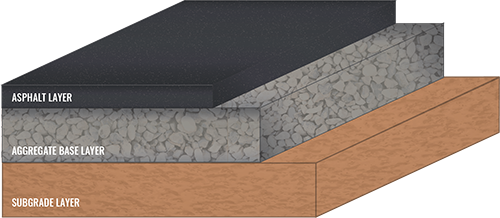Editor’s Note: In 2020 (and 2021…and 2022…you get the point), there have been a lot of unanswered questions about life and living, so in our partnership with the Chemical Engineering Service Learning Class at Tulane University, taught by Dr. Julie Albert, we made it our aim to find questions we could answer. The series is called “Dear Big Chem-EZ” (think “Dear Abbey” but with less about “Why does my partner ignore me?” and more about “Can I actually drink my tap water?” and “What’s that smell outside my house?”).
You can look for new pieces every first Tuesday of the month because we love science, we love answers, and we love knowing what’s going on with all these potholes! Let’s take a look! If you have questions you’d like answered, send them to thebigchemez@gmail.com.
Dear Big Chem-EZ,
Driving down some of the roads in New Orleans can feel like a real-life game of Mario KartTM. However, instead of swerving for coins or special items, drivers swerve to prevent damaging their cars. It seems like every road you turn down on, there is always a pothole waiting for you, seemingly appearing out of nowhere. It makes you wonder. What causes these potholes to form?

Pothole Damage in New Orleans [1]
There are three main components that make up roadways, as shown below. The first and bottom layer of roadways is the subgrade layer, which is the foundation and most important component of the roadways. This layer typically consists of the native soil that has been compacted to withstand heavy traffic loads [4]. The next layer is the subbase layer, which typically consists of crushed aggregate, gravel, or recycled materials, such as oyster shells. The main role of the subbase layer is to evenly distribute the load over the subgrade layer [4]. The last and top layer of roadways is the asphalt layer. The main role of the asphalt layer is to prevent water penetration into the pavement and provide extra protection from abrasion and weathering effects [4].

Layers of the Roadway [4]
– Big Chem-EZ
References:
[1] “Dangers of Potholes in New Orleans: Who Is Liable for Your Damages?” Law Office of John W. Redmann, LLC, 10 May 2021, https://www.redmannlaw.com/dangers-of-potholes-in-new-orleans-who-is-liable-for-your-damages/.
[2] “How Does Summer Heat and Weather Affect Asphalt?” JR Paving & Construction Co Inc, https://www.jrpavingandconstruction.com/how-does-summer-heat-and-weather-affect-asphalt.
[3] “How Pavement Reacts to Temperature Changes.” Mr Pavement, 27 Apr. 2018, https://www.mrpavement.com/about-us/blog/general-information/how-pavement-reacts-temperature-changes/.
[4] “Pavement Design.” Asphalt Pavement Design Services | Twin Cities, MN, https://bitroads.com/Customer-Education/Pavement-Design.
 NOLAbeings Multimedia artist Claire Bangser created NOLAbeings as a portrait-based story project that marries...
NOLAbeings Multimedia artist Claire Bangser created NOLAbeings as a portrait-based story project that marries...  Voodoo in New Orleans: Reviving history: New Orleans fortune telling This article takes a deep dive into the history of Voodoo in New Orleans, its hybridization with Catholicism, and its present-day place in the city's culture. The author visits fortune-tellers in the French Quarter, using their guidance as a tool for introspection rather than a deterministic predictor of the future. Through her experiences in New Orleans, the author feels a mystical connection to both the past and the future.
Voodoo in New Orleans: Reviving history: New Orleans fortune telling This article takes a deep dive into the history of Voodoo in New Orleans, its hybridization with Catholicism, and its present-day place in the city's culture. The author visits fortune-tellers in the French Quarter, using their guidance as a tool for introspection rather than a deterministic predictor of the future. Through her experiences in New Orleans, the author feels a mystical connection to both the past and the future. 